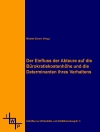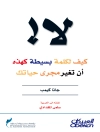Now available as an e Book for the first time, this 1998 book from the Melland Schill series looks at The World Trade Organization, which was set up at the conclusion of the Uruguay Round of Trade Negotiations and came into force on 1 January 1995, forming a pillar of the international trading system.
This book explains the legal framework established by the WTO, and explores how it can be made to work in practice. Asif H. Qureshi provides a basic guide to the new WTO code of conduct, and then focuses on implementation. First, he explains the institutional provisions of the WTO through an examination of GATT 1994 and the results of the Uruguay Round. Part Two covers techniques of implementation, and the third section covers the issues and problems of implementation relating to both developing countries and trade ‘blocs’. Finally, Qureshi presents a complementary documentary appendix, including a complete copy of the Marrakesh Agreement establishing the WTO.
Tabela de Conteúdo
Part I The framework of the international trading system
1 Institutional aspects of the World Trade Organization
2 The WTO code
Part II Implementing international trade norms – generally
3 Techniques of implementation – theory
4 Implementing the WTO code – generally
5 Dispute settlement
6 The Trade Policy Review Mechanism
7 Pre-conditions
Part III Implementing international trade norms – specifically
8 Developing countries
9 Trade ‘blocs’
10 The European Communities
Part IV Appendix: selected documents
Selected extracts from The Final Act Embodying the Results of the Uruguay Round of Trade Negotiations: Marrakesh Agreement Establishing the WTO; GATT 1994; GATS; Understanding on Rules and Procedures Governing the Settlement of Disputes
Sobre o autor
Asif H. Qureshi is Emeritus Professor of International Economic Law at the University of Manchester












